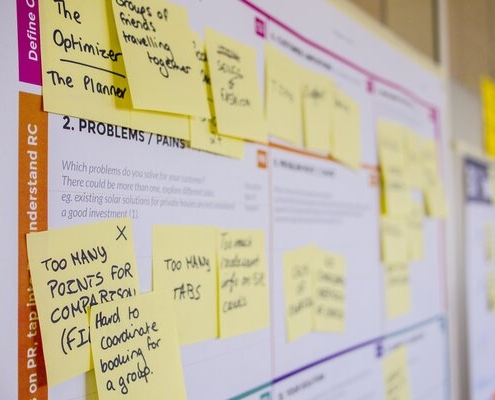PMBoK7 Perspectives: More Systems Thinking

Photo by Aarón Blanco Tejedor on Unsplash
The Project Management Body of Knowledge (PMBoK7) talks about recognizing, evaluating, and responding to system interactions, which means project managers must engage in systems thinking to drive positive project performance. Adding to last week’s list, here are more ways that systems thinking can boost project performance.
Turn up the empathy. The best project managers empathize with business stakeholders. In fact, their empathy is so well-tuned, they think like their business stakeholders. They can anticipate the concerns stakeholders might raise and understand what approaches will reduce those concerns. They understand business stakeholder goals and tailor the project to help bring them to fruition. They FEEL as well as see what is happening. That feeling is a form of intuition, where they listen to the words stakeholders use to determine whether they are comfortable (or not).
Assumptions get you started but not to the finish! Systems thinking involves understanding the role of assumptions. Projects usually require assumptions prior to launch. Clever and reasonable assumptions can support projects that otherwise might not be approved. However, all assumptions are risks! If the assumptions are incorrect, the business case can easily become invalid. So, start by making assumptions, launching your project, and then work to validate those assumptions. As you validate your assumptions, your risk decreases. With sound systems thinking, most, if not all, elements within an assumption can be validated. These validated facts allow you to finish your project with minimal risk!
Hold methodologies loosely. With standard methodologies, you establish a pattern of behavior and share standard tracking reports that stakeholders are familiar with. That is a significant benefit but doesn’t guarantee that the methodology is the best approach to project delivery. With systems thinking, you can identify the value that each step and deliverable provides to your project and business. If a deliverable doesn’t provide value, skip it, or change or minimize it. Create a customized methodology for your project with only the steps and deliverables that add value and share the methodology with stakeholders. It shouldn’t be changed so much it becomes unrecognizable but should be better positioned to meet the needs of the project and its stakeholders.
Be as agile as possible. Being agile isn’t the same as using an agile methodology. Being agile means that you strive to learn as much as you can as early as you can in the project lifecycle. Develop prototypes ASAP – a whiteboard and post-it notes may be all that’s required. Test your products as early as possible. Recognize when your business is changing quickly or that stakeholders are figuring out what they need as they go, so you can be ready for changes to hit your project. Allocate contingency budget for changes if you are working in a waterfall model and be prepared to change plans quickly to respond to business needs.
For more about project management, check out my Project Management Foundations course.
Coming Up
Project 2021 and Project Online Desktop Client Essential Training will be published in a few months.
LinkedIn Office Hours April 13, 2022, 1:00PM MT- Prerequisites for a Project Management Entrepreneur
Have you thought about going out on your own as a project manager, instead of being an employee? Seyi Kukoyi, PMP, and Bonnie Biafore, PMP, provide guidance for that journey in the course Become a Project Management Entrepreneur. But being your own boss isn’t for everyone. In this LinkedIn Office Hours event, Seyi and Bonnie welcome John Riopel and Oliver Yarbrough to a panel discussion about what you need to know before diving into the deep end of the PM entrepreneur pool. We will cover how to tell if you’re cut out for entrepreneurship; the difference between being a contractor and a business owner; skills and tools you need to be a PM Entrepreneur, and steps to take before you quit your job.









